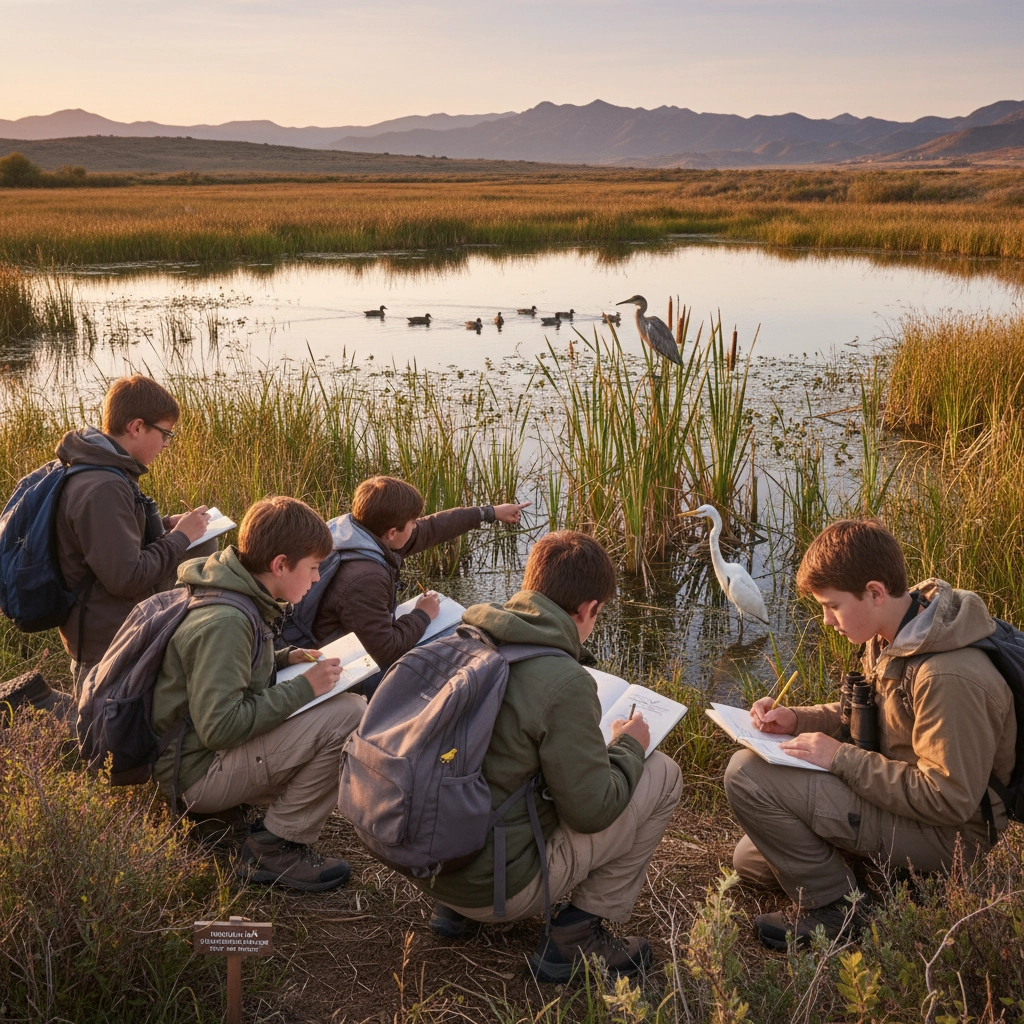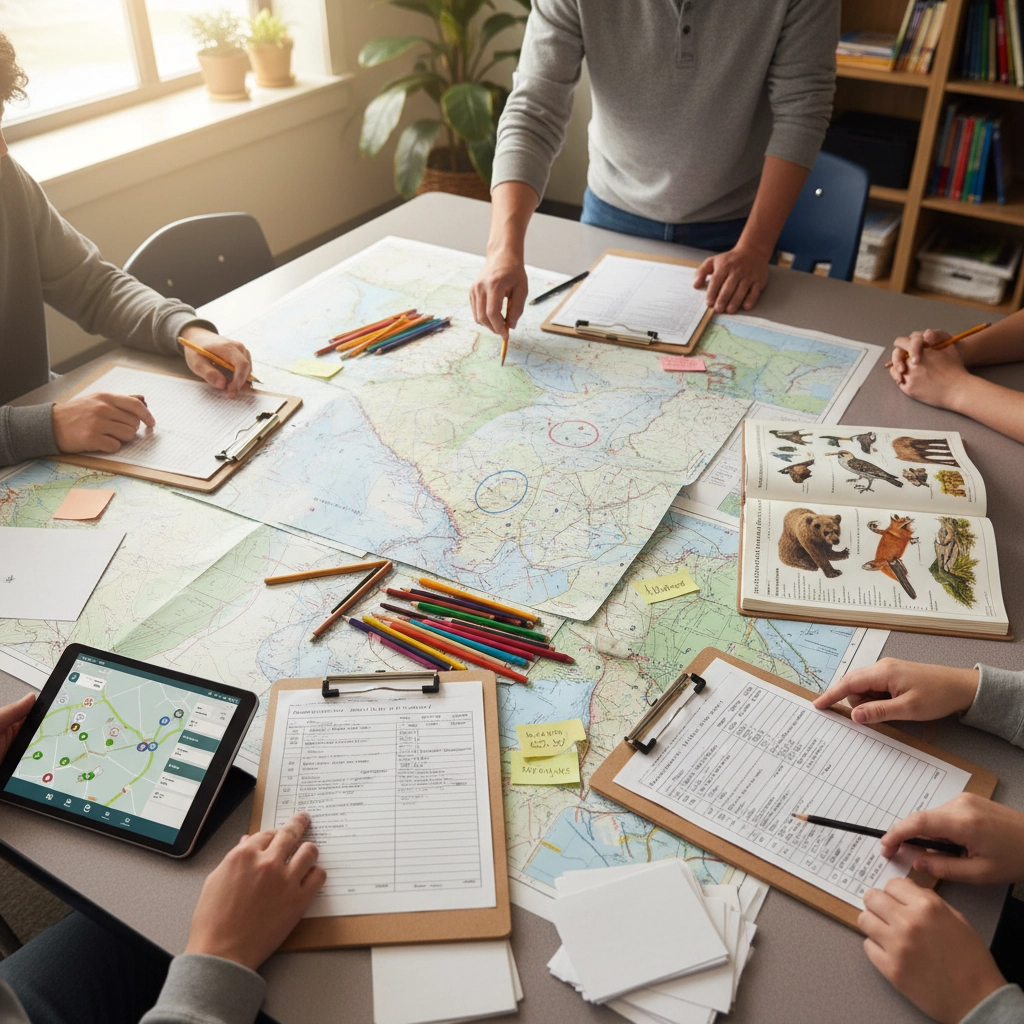Conservation Science Trip Planning 101: A Teacher's Guide to Wildlife Conservation Student Travel
- Caleb Mullenix
- Oct 20
- 5 min read
Planning an effective wildlife conservation field trip requires meticulous preparation, clear educational objectives, and strategic coordination across multiple domains. The success of these transformative educational experiences depends entirely on your ability to anticipate challenges, establish comprehensive safety protocols, and create meaningful learning opportunities that inspire students to become environmental stewards.
Establishing Your Educational Foundation
Begin your conservation trip planning by conducting a thorough curriculum audit at the start of each academic year. Identify specific learning standards and objectives that can be enhanced through hands-on wildlife conservation experiences. Document how field-based learning will reinforce classroom concepts while providing authentic assessment opportunities that cannot be replicated in traditional indoor settings.
Create detailed learning objectives that align with your state's science standards, environmental education requirements, and conservation literacy goals. Ensure that every planned activity directly supports measurable educational outcomes. Document these objectives clearly, as they will guide all subsequent planning decisions and help justify the educational value of your expedition to administrators, parents, and funding sources.
Research potential destinations thoroughly, evaluating each site's educational offerings, conservation focus, and alignment with your curriculum needs. Contact site coordinators at least six weeks in advance to discuss your specific learning objectives and confirm availability. Request detailed information about their educational programs, research opportunities, and conservation projects that students can observe or participate in directly.

Pre-Trip Preparation and Student Involvement
Engage students in the planning process to maximize their investment in the learning experience. Assign research projects related to the ecosystems, species, and conservation challenges they will encounter during the trip. Require students to develop questions they want to investigate, hypotheses they wish to test, and conservation issues they hope to understand more deeply.
Create comprehensive pre-trip learning modules that introduce students to the scientific concepts, conservation principles, and research methodologies they will encounter. Design activities that build background knowledge about local wildlife, habitat requirements, conservation success stories, and ongoing environmental challenges. Ensure students understand their role as citizen scientists and conservation ambassadors during the expedition.
Establish clear behavioral expectations and academic standards for the trip. Communicate that this educational experience requires active participation, scientific observation skills, and respectful interaction with natural environments. Emphasize that students will be representing their school and contributing to real conservation research efforts.
Administrative Coordination and Documentation
Secure administrative approval through a detailed proposal that outlines educational objectives, safety protocols, budget considerations, and anticipated learning outcomes. Provide administrators with comprehensive information about the trip's academic value and how it supports school-wide educational goals. Include documentation of the site's safety record, educational credentials, and alignment with district policies.
Complete all required paperwork well in advance of your departure date. Ensure that permission slips include detailed information about activities, potential risks, emergency procedures, and contact information. Require parents to provide comprehensive medical information, emergency contacts, and specific authorization for outdoor activities and wildlife observation.
Coordinate with school health services to review student medical needs and develop appropriate accommodations. Create individual medical action plans for students with chronic conditions, allergies, or special requirements. Ensure that all medications are properly documented, stored, and accessible during the expedition.

Chaperone Recruitment and Training
Recruit chaperones strategically, aiming for a ratio of one adult for every eight to ten students, depending on the complexity of activities and potential risks. Prioritize recruiting adults with outdoor experience, scientific backgrounds, or demonstrated interest in conservation topics. Ensure that all chaperones understand their educational role extends beyond simple supervision.
Conduct comprehensive chaperone training sessions that cover emergency procedures, educational objectives, behavioral management strategies, and specific conservation content. Provide chaperones with detailed itineraries, student information, emergency contact lists, and clear expectations for their participation in learning activities.
Distribute educational materials to chaperones in advance, including field guides, conservation background information, and discussion prompts they can use to enhance student learning. Ensure chaperones understand the scientific concepts students are investigating and can provide meaningful support during research activities.
Transportation and Logistics Management
Arrange transportation that meets all safety requirements and provides adequate space for students, chaperones, and educational materials. Confirm that your transportation provider has appropriate insurance coverage, safety certifications, and experience with student group travel. Provide drivers with detailed itineraries, emergency contacts, and any special requirements for your destination.
Develop comprehensive packing lists that include weather-appropriate clothing, personal safety equipment, research materials, and emergency supplies. Emphasize the importance of proper footwear, protective clothing, and personal water bottles. Create backup plans for equipment failures, weather changes, and unexpected circumstances.
Establish clear communication protocols with parents, administrators, and emergency contacts. Provide detailed contact information for all trip leaders and ensure that emergency communication systems are tested and functional. Create contingency plans for various scenarios, including weather delays, student illness, and transportation issues.

Safety Protocol Implementation
Develop site-specific safety protocols that address the unique risks associated with wildlife observation and outdoor research activities. Conduct thorough risk assessments for each planned activity and location. Create written safety procedures that all participants must acknowledge and follow throughout the expedition.
Establish clear supervision standards that ensure students remain within designated areas and maintain appropriate distances from wildlife. Create buddy systems that promote peer accountability and enhance overall group safety. Train chaperones to recognize potential hazards and implement immediate response procedures.
Carry comprehensive first aid supplies and ensure that multiple adults are trained in emergency response procedures. Establish communication systems that allow for immediate contact with emergency services and medical professionals. Create detailed emergency action plans that address various scenarios specific to your destination and activities.
During the Trip: Maximizing Learning Opportunities
Structure activities to promote active learning, scientific inquiry, and conservation awareness. Design observation protocols that require students to collect data, make predictions, and draw evidence-based conclusions about wildlife behavior and conservation strategies. Encourage students to document their experiences through scientific journals, photography, and data collection sheets.
Facilitate meaningful interactions with conservation professionals, researchers, and park staff who can provide expert perspectives on current conservation challenges and success stories. Arrange for students to observe or participate in real conservation research projects, habitat restoration activities, or wildlife monitoring programs.
Create opportunities for reflection and discussion throughout the trip. Schedule regular debriefing sessions where students can share observations, ask questions, and make connections between field experiences and classroom learning. Encourage students to consider their personal roles in conservation efforts and environmental stewardship.
Post-Trip Integration and Assessment
Design comprehensive post-trip activities that help students process their experiences and apply their learning to broader conservation contexts. Require students to analyze data collected during the trip, research conservation solutions, and present their findings to authentic audiences including younger students, community members, or conservation organizations.
Create assessment opportunities that evaluate both content knowledge and conservation awareness gained through the field experience. Design projects that require students to propose conservation solutions, evaluate human impacts on wildlife, and demonstrate understanding of complex ecological relationships observed during the trip.
Share trip outcomes with administrators, parents, and community members to demonstrate the educational value of conservation field experiences. Document student learning growth, conservation awareness development, and increased environmental stewardship behaviors that result from the expedition.
Partnering with Appleseed Expeditions
Appleseed Expeditions specializes in creating comprehensive wildlife conservation experiences that meet the demanding educational and safety standards required for successful student travel. Our expert guides understand the delicate balance between adventure and education, ensuring that every moment of your expedition contributes meaningfully to student learning and conservation awareness.
Our conservation programs connect students directly with ongoing research projects, habitat restoration efforts, and wildlife monitoring initiatives that provide authentic scientific experiences. We coordinate closely with conservation organizations, research institutions, and protected area managers to ensure that student activities contribute to real conservation outcomes while meeting rigorous educational standards.
Contact Appleseed Expeditions to discuss how our conservation science programs can support your curriculum goals while providing students with transformative experiences that inspire lifelong environmental stewardship. Our comprehensive planning support, safety protocols, and educational expertise ensure that your wildlife conservation expedition exceeds expectations while maintaining the highest standards of student safety and academic achievement.



Comments